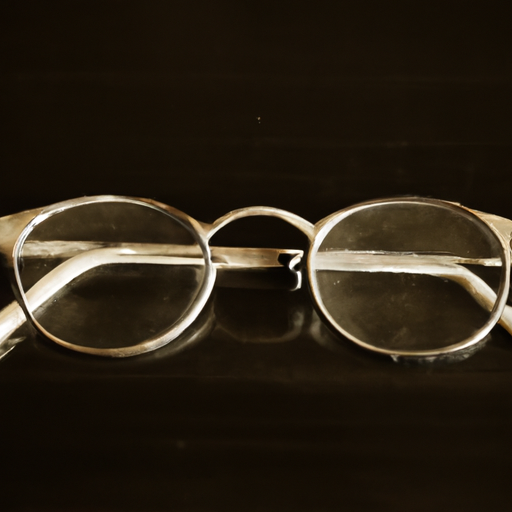In “The History of Optometry: Evolution and Advancements,” you’ll discover the fascinating journey of optometry from ancient times to the modern era. From the earliest spectacles invented in medieval Italy to the groundbreaking discoveries in refractive surgery, this article will take you on a captivating exploration of how optometry has evolved over the centuries. You’ll also learn about the advancements in technology that have revolutionized the field, allowing optometrists to provide their patients with the best possible vision care. So, grab a cup of coffee and prepare to embark on a journey through the history of optometry.
History of Optometry
Optometry, the branch of healthcare focused on eye care and vision, has a rich and fascinating history that dates back thousands of years. From the ancient civilizations of Egypt and Greece to the modern era of advanced technology, optometry has continually evolved to meet the needs of individuals seeking to improve their vision.
Early Developments
The origins of optometry can be traced back to ancient civilizations and their treatments for eye diseases. In Egypt, for example, medical papyri dating back to 1500 BCE mention the use of various herbal remedies and ointments for eye ailments. Similarly, in ancient Greece, physicians like Hippocrates and Galen wrote extensively about eye diseases and treatments.
Ancient Civilizations and Eye Medicine
Ancient civilizations, such as the Egyptians and Greeks, recognized the importance of eye health and developed various techniques for diagnosing and treating eye conditions. They believed that illness and disease in the body could manifest in the eyes, and consequently, a careful examination of the eyes was conducted as part of the overall medical evaluation. These early civilizations laid the foundation for the understanding of the role of the eyes in health and the development of future optometric practices.
The Middle Ages and the Emergence of Eyeglasses
During the Middle Ages, the science of optometry advanced significantly with the emergence of eyeglasses. The first recorded use of eyeglasses was in Italy in the 13th century, where they were initially used by monks and scholars to aid reading and writing. The discovery of convex and concave lenses allowed for the correction of various visual impairments, revolutionizing the field of optics and providing a practical solution for individuals with poor eyesight.
The First Optometry Schools
As interest in eyeglasses and vision care grew, the first optometry schools were established in the late 19th century. These schools provided formal education and training for individuals interested in becoming optometrists. One notable example is the Pennsylvania College of Optometry, founded in 1919, which played a crucial role in shaping the future of optometric education and professional standards.
Advancements in Lenses and Corrective Eyewear
The 20th century saw tremendous advancements in lens technology and corrective eyewear. The development of new materials and manufacturing techniques allowed for the creation of thinner, lighter, and more durable lenses. Anti-reflective coatings were also introduced, reducing glare and improving visual clarity. Additionally, the advent of bifocal and multifocal lenses provided solutions for individuals with both nearsightedness and presbyopia, further expanding the capabilities of optometry.
The Introduction of Contact Lenses
In the 1950s, the introduction of contact lenses revolutionized the field of optometry. Contact lenses provided a non-intrusive alternative to traditional eyeglasses, offering improved convenience and a more natural field of vision. The development of gas-permeable and soft contact lenses further enhanced comfort and made them accessible to a wider range of individuals. Contact lenses continue to evolve today, with innovations such as toric lenses for astigmatism and daily disposable lenses for increased hygiene.
The Development of Optometric Associations
As the field of optometry grew and gained recognition, optometric associations were formed to support the profession and advocate for the rights and interests of optometrists. These associations played a vital role in promoting optometry as a distinct healthcare discipline and helped establish professional standards and regulations. They also provided a platform for optometrists to collaborate, share knowledge, and stay updated on the latest advancements in the field.
The Use of Technology in Optometry
Advancements in technology have had a profound impact on the practice of optometry. From the introduction of automated refractors and computerized imaging devices to the use of lasers in refractive surgeries, technology has allowed optometrists to provide more accurate diagnoses, perform precise measurements, and offer innovative treatment options. Digital retinal imaging, for instance, enables the early detection of eye diseases like glaucoma and macular degeneration.
Optometry in the Modern Era
In the modern era, optometry continues to evolve in response to societal and technological changes. Optometrists now play a crucial role in primary eye care, diagnosing and managing various eye conditions, prescribing medications, and providing pre- and post-operative care for surgical procedures. They also collaborate with other healthcare professionals, such as ophthalmologists and primary care physicians, to ensure comprehensive and integrated patient care.
Current Trends and Future Outlook
The future of optometry looks promising, with ongoing advancements in technology and research. The development of smart contact lenses, which can monitor health parameters and deliver medication, holds enormous potential for improving both eye health and overall wellness. Telehealth services, allowing patients to access optometric care remotely, are also gaining popularity, offering convenience and expanding access to underserved communities.
In conclusion, the history of optometry is a testament to human ingenuity and the continuous pursuit of improving vision and eye health. From ancient civilizations to the modern era, optometry has undergone significant transformations, driven by scientific advancements and a commitment to providing optimal patient care. As we embark on a future filled with exciting possibilities, optometry will undoubtedly continue to play a vital role in preserving and enhancing our most precious sense – vision.

